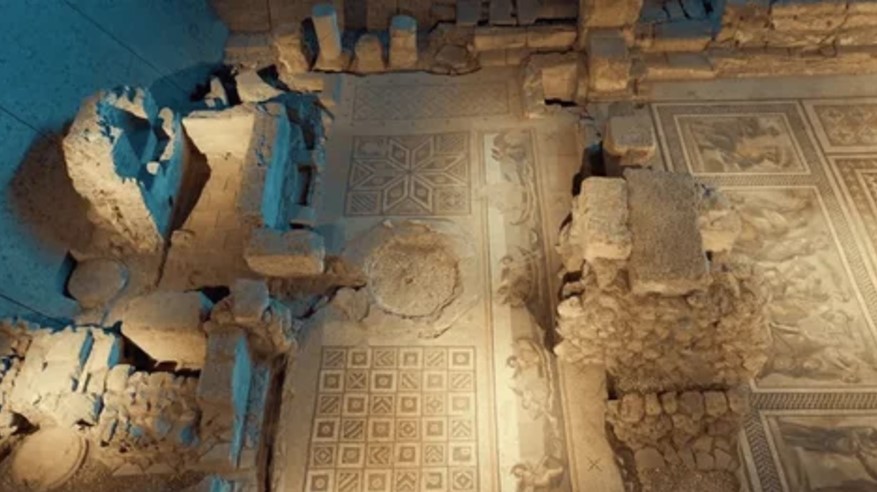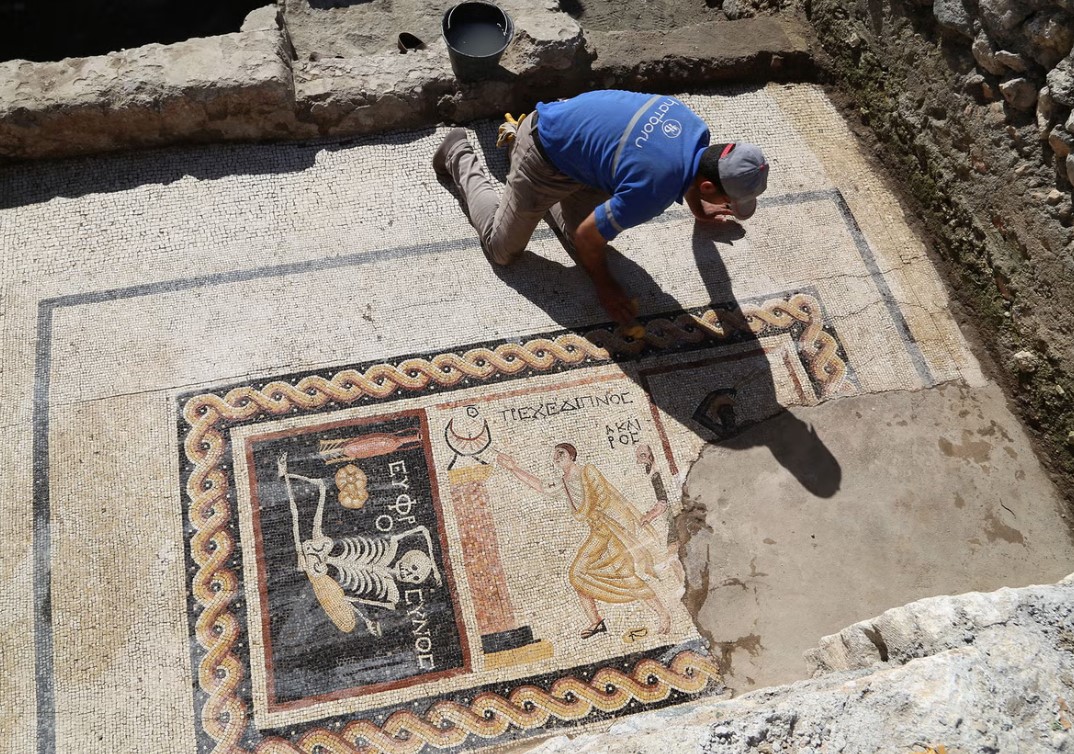The Antiochos Grandeur, the world’s largest intact mosaic, located beneath the Antakya Museum Hotel in Türkiye, is a groundbreaking moment in the field of archaeology. This stunning 1,050-square-meter find, unearthed in modern-day Antakya (ancient Antioch), reveals the rich cultural and artistic heritage of a city that was once the center of ancient civilizations. Preserved with exceptional care and craftsmanship, the mosaic offers invaluable insights into the life, aesthetics, and history of Antioch in ancient times. Let’s explore ancient civilization with archeology.dulichvn.net
Historical significance of The Antiochos Grandeur
Foundation of the City
Antiochos Grandeur Founded in 300 BCE by Seleucus I Nicator, a general of Alexander the Great, Antioch quickly rose to prominence as one of the most important cities of the ancient world. Situated strategically on the Silk Road, the city became a thriving trade hub connecting the East and the West. Antioch’s diverse population and vibrant culture made it a melting pot of Hellenistic, Roman, and early Christian traditions.

A Center of Art and Culture
Antioch was renowned for its grand public spaces, including temples, theaters, and intricate mosaics. These mosaics were more than decorative pieces; they were a testament to the city’s wealth and cultural sophistication. Many depicted mythological scenes, geometric patterns, or daily life, reflecting the artistic and aesthetic values of the time.
Antioch in Context Antiochos Grandeur
During the Roman era, Antioch was known as the “Queen of the East,” rivaling Alexandria in Egypt. Its cultural and economic significance persisted for centuries, leaving a lasting legacy in architecture, art, and literature.
See more: A Rare Roman Slave Tag: Unveiling the Harsh Realities of Ancient Rome
The Mosaic Beneath the Antakya Museum Hotel
Unveiling the Treasure
During the construction of the Antakya Museum Hotel, archaeologists uncovered a vast and intact mosaic beneath the site. Spanning over 1,050 square meters, this artifact is the largest of its kind, offering a rare glimpse into the artistic mastery of ancient Antioch. It likely adorned the floor of a significant public building, such as a bathhouse, palace, or civic center.

Artistic Details and Techniques
The mosaic features intricate geometric patterns, vibrant colors, and detailed imagery. The craftsmanship reflects the high level of skill possessed by the artisans of the time. Each element of the design showcases the aesthetic preferences of Antioch’s elite, blending Hellenistic and Roman influences.
Preservation and Condition
What makes this mosaic truly extraordinary is its intact condition. For centuries, it was buried under layers of sediment and debris, which shielded it from natural and human-caused damage. Its remarkable preservation allows modern archaeologists to study its details and techniques as they were intended to be seen.
See more:Phrygian Statue of the Goddess Cybele or Agdistis
Cultural and Historical Insights
Understanding Ancient Life
The mosaic serves as more than just a visual masterpiece; it is a historical document. It provides glimpses into the social, economic, and cultural fabric of ancient Antioch. The themes and motifs depicted reflect the values, beliefs, and daily activities of its inhabitants.

The Role of Public Spaces
Large mosaics like this one often decorated spaces meant for public gatherings, emphasizing the importance of communal life in Antioch. Whether in bathhouses or civic buildings, these mosaics enhanced the grandeur and functionality of public venues.
A Testament to Craftsmanship
The sheer scale and complexity of the mosaic highlight the exceptional skills of the artisans. Their ability to create such detailed work with limited tools underscores the ingenuity of ancient craftspeople.
The Antakya Museum Hotel: Preserving History
A Unique Integration
Rather than removing or covering the mosaic, the Antakya Museum Hotel has integrated it into its design. Guests can view the mosaic through specially constructed glass floors, allowing for a close-up experience of this historical treasure while ensuring its protection.

Blending Modernity and Antiquity
The hotel’s innovative approach demonstrates how modern development can coexist with archaeological preservation. This collaboration between history and hospitality offers a new model for showcasing cultural heritage in urban settings.
An Educational Experience
The hotel’s setup also provides an opportunity for education. Visitors can learn about the history of Antioch and the significance of the mosaic while enjoying a unique, immersive experience.
Global Impact and Legacy
Drawing Worldwide Attention
The discovery has drawn interest from historians, archaeologists, and tourists across the globe. Its scale and preservation make it a landmark in the study of ancient mosaics and Roman art.

Deepening Our Understanding of Antiquity
This mosaic enhances our understanding of life in the ancient world. It illuminates the artistic achievements of Antioch and its role as a cultural crossroads, further enriching our knowledge of Roman and Hellenistic civilizations.
Inspiring Future Preservation Efforts
The careful preservation of the mosaic sets an example for how archaeological finds can be integrated into modern developments. It serves as a reminder of the importance of protecting historical artifacts for future generations.
Conclusion: A Monument to Ancient Artistry
The Antiochos Grandeur of the world’s largest intact mosaic beneath the Antakya Museum Hotel is a remarkable testament to the ingenuity and creativity of ancient Antioch. Its scale, artistry, and condition offer an unparalleled glimpse into the past, connecting us to a city that was once a beacon of culture and sophistication.
By preserving and showcasing this treasure, the Antakya Museum Hotel has created a bridge between history and modernity. Visitors from around the world can now marvel at this extraordinary artifact, celebrating the enduring legacy of human artistry and innovation.

CÁC TIN KHÁC
Mark Twain & Olivia Langdon: A 36-Year Love Story Filled with Laughter and Devotion
The Tollund Man: A 2,400-Year-Old Mystery Preserved in a Danish Bog
Skara Brae: Scotland’s Hidden Neolithic Village
Porta Nigra: The Hidden Depths of Trier’s Iconic Roman Gate